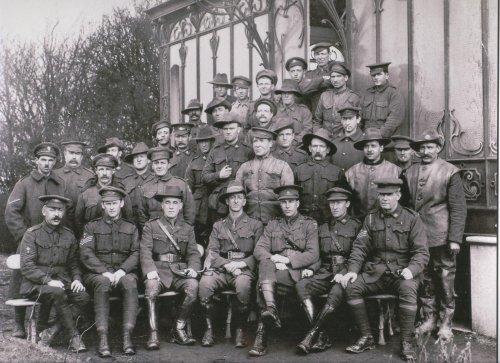













Australian Electrical & Mechanical Mining & Boring Company
(Alphabetical Coy)
Sectors engaged at:
Vimy - Arras - Ypres - Cambrai - Givenchy - Bellicourt - Las Basse Canal Double Crassiers - Ploegsteert Wood - Laventie-Fauquissart
Fire in the Ypres Ramparts - December 1917
The War Diary of Sergeant Hughie Dodd - as transcribed by Gail Dodd
Established in the Meat Market building at Hazebrouck on 16 May, 1916 with Major Richard Victor Morse appointed the Commanding Officer.
Covered operations from south of Arras to Nieuport, installing and maintaining lighting, power plant, pumps and fans for both the 1st and 2nd armies. Also supplied men for deep well boring in both forward and rear areas as well as for shallow boring tasks along the entire Western Front.
Total strength of 7 officers and 277 ranks.
Installing generators for lighting and pumps for mine workings. Providing deep well boring for water, horizontal boring for demolitions and short vertical bores for dugout ventilation.
After Germans attacked north and south of Armentieres in April 1918 the stores and workshop were transported to Assinghem near St Omer. Unit then moved to Maroeil, 6 km from Arras, in order to keep up with the advance of the 1st and 2nd Armies in August and September, 1918. They installed a generator in the new camp which powered lathes, drills, emery wheels, a grindstone and a sawbench as well as providing heat and light for their barracks and hot water.
Decorations included a DSO, 2 Military Crosses, 5 DCMs, 3 Military Medals and 15 Meritorious Service Medals.
In a letter written by Lt J.D. Royle c1960, regarding the explosion of mines at Hill 60 and Caterpiller, he makes the informed statement:
“Fortunately the generator worked perfectly and there was no need of the exploders actually. The whole of the wiring was carried out by the Australian Electrical Mechanical Mining and Boring Coy. under Major R.D. Morse, D.S.O., generally referred to as the A.E.M.M.B. Coy. This was definitely the first electrical and mechanical Coy in France and was looked upon as the progenitor of the present great and useful R.E.M.E. Coys of which there must now be hundreds.”
